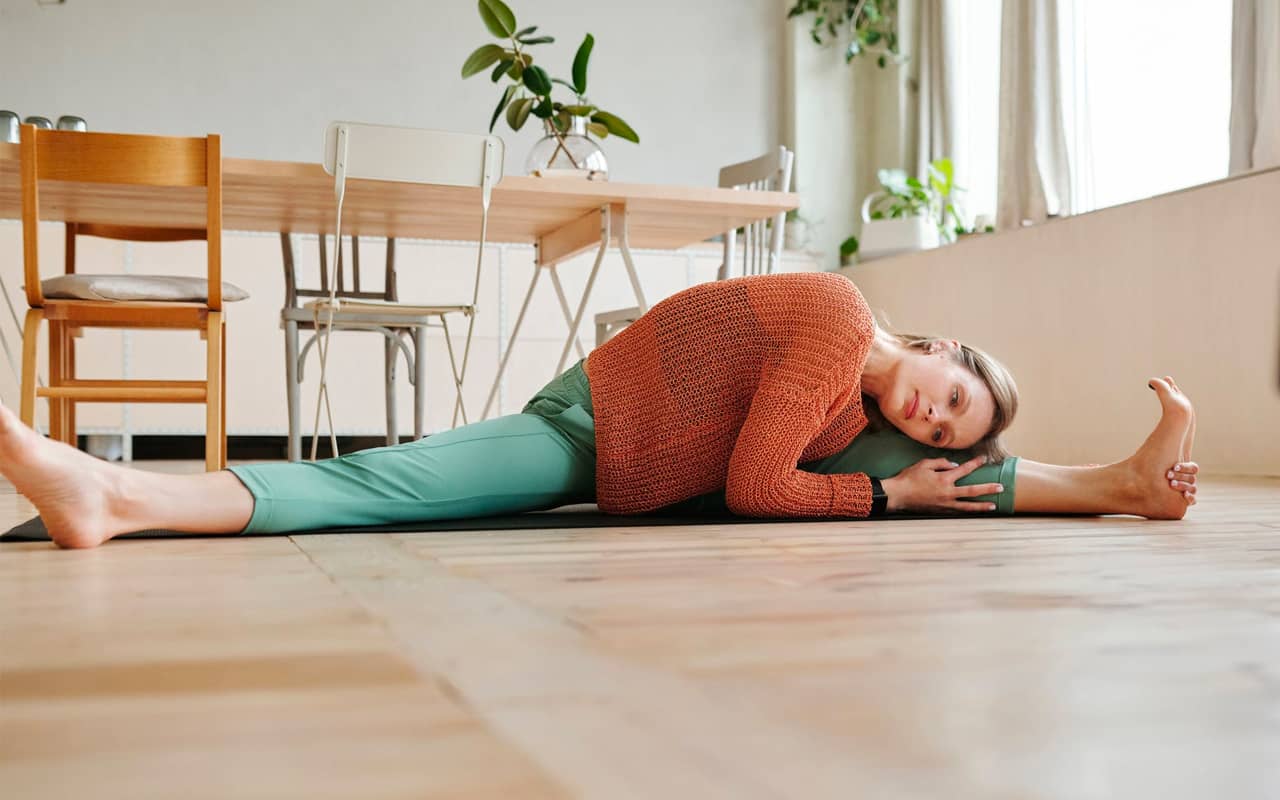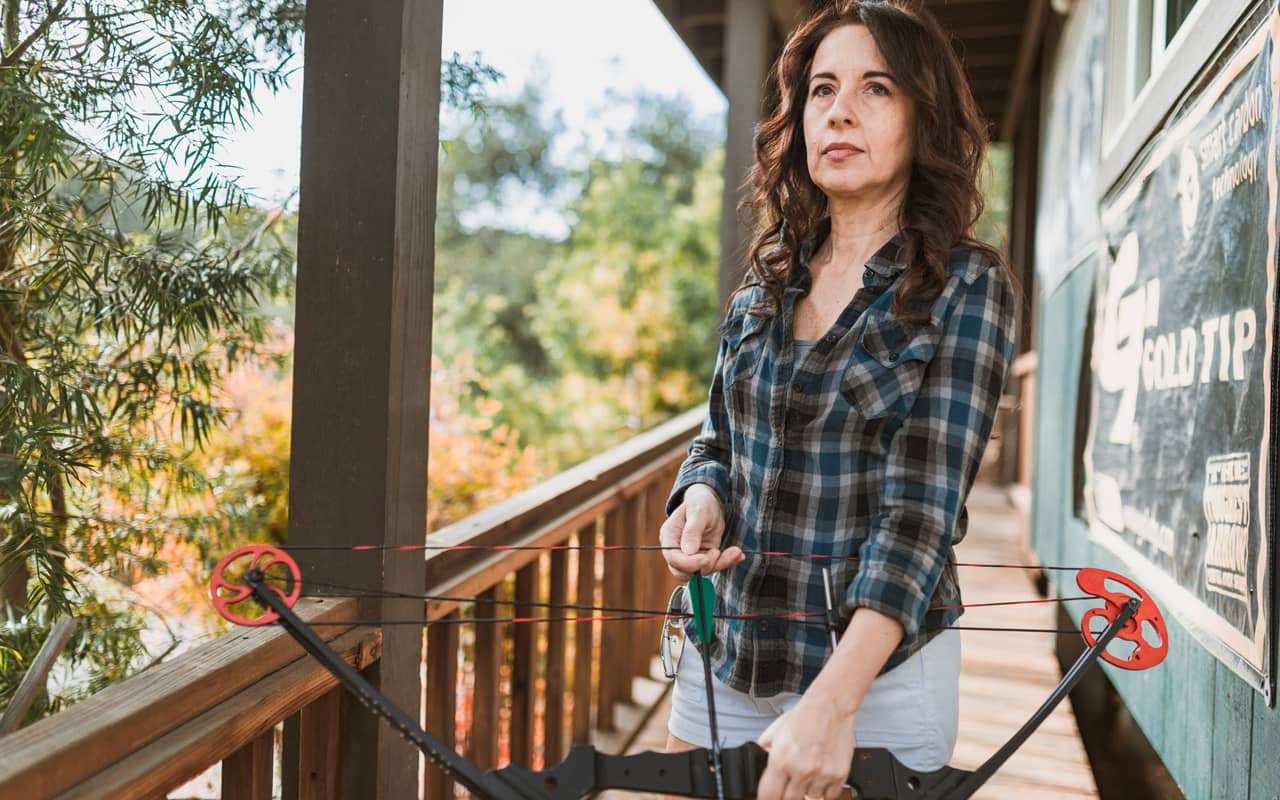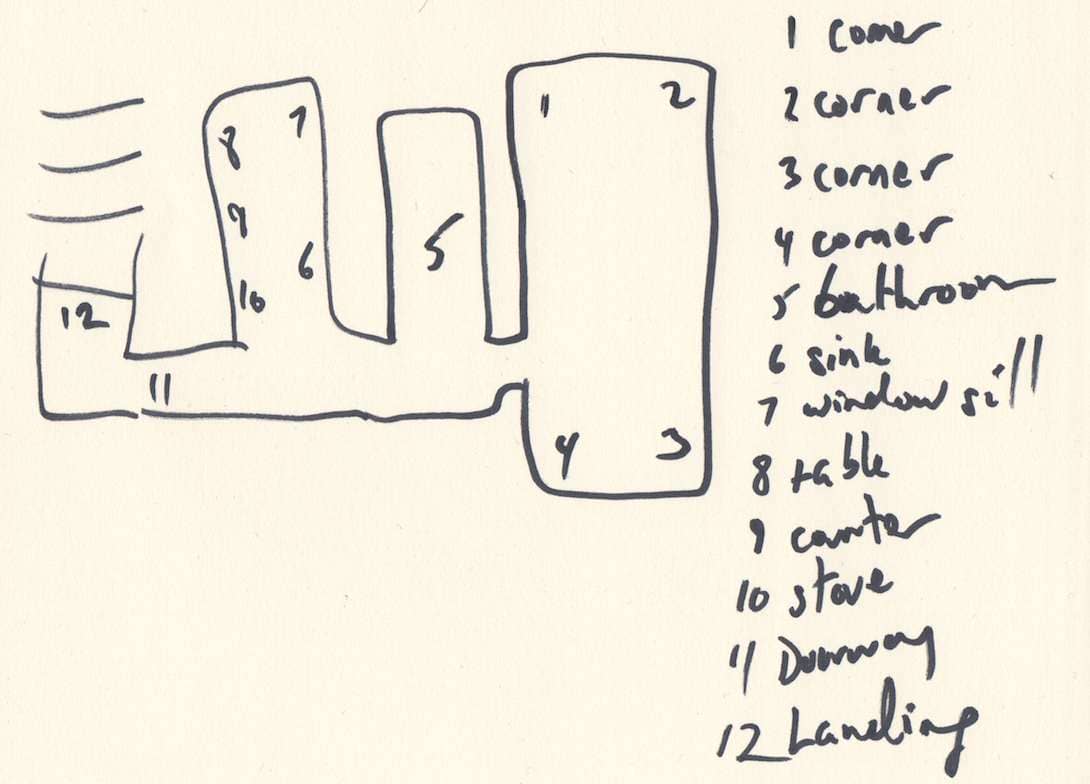 The answer to how to remember where you put something is simple:
The answer to how to remember where you put something is simple:
Step One: Designate specific spots for things.
Step Two: Always put things in those spots.
If you really want to go for gold, create a written list or spreadsheet for reference. You can also make a map of your home and use fridge magnets to indicate where you’ve left certain items you want to find easily at a later time.
The question is:
As golden as the strategies I’ve just shared are…
How realistic is it that you’ll use them?
The answer is:
Not very.
Life goes by very quickly and we simply cannot expect that we’re going to put things in the same place every single time.
That’s why on this page we’re going to explore much more reasonable and optimatal ways to find something that’s lost. And you’ll learn ways to reduce having precious items from getting lost in the first place.
Why We Forget Where We Put Something
If you want to find lost things in a hurry, it can be painfully annoying to analyze the reasons why they got lost in the first place.
However, it’s worth spending some time thinking this issue through.
For example, we may lose things because of:
- Clutter
- Cognitive decline
- Not knowing when something we set down will be needed at a certain time
- The specific intrinsic value we assign to the item
- The kind of thing (a receipt may get lost in a way that is different than car keys)
- Disruptions that “knock” information out of our immediate awareness (we often forget things when moving from one room to another because temperature and other changes swarm our senses with new stimuli)
Thinking through such possibilities can help us be kinder to ourselves when things get lost, which they inevitably will.
A Problem Of Our Times?
One interesting study to look at is called The significance of losing things for nursing home residents with dementia and their families. I suggest their research to you because the authors point out a simple fact that most of us will never think about:
Never in history have people owned so many personal possessions.
Not only do we tend to have more objects overall than any previous generation. We also have elaborate digital identities.
It might seem like a small thing at first glance. But in reality, having multiple email accounts and social media profiles on several platforms takes up tons of mental space. Managing where we’ve placed our information on computers or in the cloud can and often does lead to digital amnesia.
I can think of another issue related to how people living in our times own more things coupled with storing endless personal data in computers.
We have memory “meta-memories,” which is to say, memories about the memories that we’ve had.
In other words, I often think of photos I used to have on hard drives that no longer work. It’s great that I’ve used memory techniques throughout my life, something that’s made remembering such highly personal memories easier.
For some of us, however, this kind of meta-memory leads to levels of loss and longing our species never had to deal with before. Learning to let go is in some case the best option.
But the bigger picture aside, when it comes to simple items that you’ve misplaced, there are fortunately very simple strategies. I use them often myself and each one is powerful.
How to Remember Where You Put Something: 6 Easy Tips
As we’ve already noted, not losing things in the first place by organizing their locations is not always a realistic strategy.
This begs the question:
How do I remember where I put something?
Give the following steps a try:
Step One: Relax
Before you do anything, make a conscious effort to bring peace and calm into your mind and body.
You can do invite calm into your physical space by taking a deep breath and flexing all your major muscle groups.

To relax your mind, you can also learn more about how breathwork relates to better memory overall.
The key thing is to breathe deeply and commit to not getting upset or frustrated during your search. This part of the process can be difficult, but you have little to gain by searching as if you’re on the warpath.
You might also find that taking the simple step of pausing to focus on your breath and to relax yourself sometimes pops the missing item into your mind.
Although this is not a bulletproof strategy, I believe it works more often than not for a simple reason: When you’re willing to let go of the outcome, you make it easier for your mind and memory to let the location of the missing item come to mind.
Step Two: Mentally Retrace Your Steps
This is a common piece of advice, and it works a lot better if you’re relaxed first.
Here’s a tip for how to do it thoroughly:
Start at the “terminal station” in your home. By this, I mean the spot that would be a dead end if you were to enter at the front door and walk up to something like the master bedroom on the second floor.
The exact spot will be different in each home or office, but if you start there, you can mentally walk toward one of the exits in an orderly fashion.
You can make the process easier by drawing a floor plan for yourself to help visualize the mental journey. Here’s one of the drawings I’ve made of a home, something that has helped me mentally navigate the location much more smoothly when thinking through where lost items might be found:
Note that I’m not suggesting high art. But by drawing out the location, you’ll be better prepared to think through all the nooks and crannies where an item possibly could have fallen.
Step Three: The Physical Search
If your mental searching doesn’t give you any clues or direct answers, it’s time to start hunting with your eyes and hands.

But instead of conducting the search “helter skelter,”use the same principle I just suggested. Start as deep into the building as you can and move through it in an orderly fashion.
Another benefit of this strategy is that it will help make sure you don’t lose your train of thought as you search. You can use your drawing to check off places that you’ve already searched.
Step Four: Make A Checklist
It can be useful to keep a checklist of where you’ve looked. This is because nothing wastes time and stacks on frustration faster than looking in the same place two or more times.
When looking for the missing object, aim to be thorough. If you’re looking into boxes in storage, for example, make sure to pick the boxes up and look under them so that shadows don’t obscure the object.
This happened to me during a recent move when I was looking for a screwdriver I’d set down. I couldn’t see it in the garage until I picked up a box that had hidden the screwdriver in shadow.
Had I been following a check list that covered both the areas I’d searched and reminded me to pick up boxes and other items that cast shadows, I probably would have found the missing item a lot sooner.
Step Five: Take A Break
Any time the object you’re looking for isn’t desperately needed, taking breaks during your search is important. Focusing on something else after 10-15 minutes of searching can help the mind remember details that otherwise would not float to the surface.
Taking walks or a hot shower can also stimulate what is called diffuse thinking. Many problems are solved this way, including memory issues related to lost objects. And at the risk of repetition, it’s also a good idea to focus on your breath, if only briefly, during the pauses you take.
Step Six: Celebrate & Commit
Let’s assume you’ve found the missing object.
Take a moment to congratulate yourself. You’ve done well.
Then, commit to doing better the next time by treating your precious items in ways that help ensure they won’t get lost.
How?
Here are a few steps to consider:
- Learn more about how to stop losing things
- Practice concentration skills by practicing scientifically valid brain exercises
- Spend time organizing both your offline and online life to reduce clutter
- If you have cognitive issues, consider taking photographs of where you leave things
- New technologies make it easy to add tabs and tags to objects for finding using apps
But on the final suggestions, make sure that using technology is a supplement to training your brain to find things, not a replacement.
Why?
Because we don’t want to use our modern tools to create learned helplessness. Adding digital trackers increases the risk of deskilling the mental fitness you want to develop.
I’m only mentioning the digital tracking option because some people (like those dealing with Alzheimers’) might have no other choice.
How to Find Lost Items: Additional Tips
When it comes to finding lost items even faster, here are some additional tips and tricks I’ve found useful over the years.
Keep Control Over Your Emotions
Getting upset when you can’t find something you’ve lost track of is understandable.
But it could be causing you to push the location even further out of your mind. Stress has been linked to memory loss, so we want to avoid it.
In The Victorious Mind, I go further into breathing exercises, meditation and other mindfulness techniques that can keep you in good emotional stead.
Harness Your Family & Community
You don’t always have to search alone. Ask for help from others in order to speed up the search.
If you’re particularly forgetful, getting into the habit of telling others where you’re placing a commonly misplaced object can be helpful.
The trick here is to only involve positive people. Family members who take every opportunity to criticize you for your forgetfulness should be avoided when it comes to this particular issues.
Say Locations Out Loud When Leaving Items
One way to help your brain remember the location where you’re leaving something much better yourself is saying it out loud.
For example, you can announce out loud, “I’m leaving the keys by the door.”
Sure, this might feel silly, but it will help create a stronger memory because you’re using more of your brain while placing the item in a location.
If you’re with someone else, you also give yourself an extra shot that someone else will remember it too because they will have heard you say the location of the item too.
Play Lost & Found Games
Okay, this suggestion is a bit quirky.
But think about it:
When you regularly exercise the “treasure hunt” capacities of your mind, you’ll develop mental muscles for locations.
You don’t have to wait for Easter to play such games. And it’s fun to get the whole family involved.
Also consider using a round of lost & found as a segue into other brain games for adults.
The Ultimate Way to Train Your Brain to Remember Where You Put Something
Earlier I mentioned starting at a particular part of your home when conducting a search.
This approach is also used as part of an ancient memory strategy called the Memory Palace technique. It’s a way of rapidly finding our way back to ideas we don’t want to forget. It’s also useful in language learning, where the practice of memorizing vocabulary itself helps you find information better in your mind.
Although this technique offers you an indirect path to finding items you’ve misplaced, it will exercise the location-sensibilities of your mind because it uses spatial memory in a way that can heighten your awareness of your surroundings.
If you’d like to learn more about it, check out my FREE Memory Improvement Course:
Within a short period of practice, you should find yourself experiencing some memory boosts that help you learn faster across the board.
But at the end of the day, nothing beats relaxing yourself, searching strategically and then committing to do better in the future.
So what do you say?
Are you ready to find things you’ve lost in a better way than ever before?
Related Posts
- Memory Improvement Fun And Games: Mark Channon Talks About How To Remember Anything
Mark Channon Makes Memory Improvement Fun!
- The Only 4 Memory Improvement Systems You Need
People interested in memory techniques hunt the internet for mnemonic "systems." Stop wasting your time.…
- Nelson Dellis On Remember It! And Visual Memory Techniques
Looking for visual memory techniques? And I mean truly visual. In this episode of the…








2 Responses
Thank you I just read your article in many of them on memory I lost my social security card and I need it for a really important appointment so I can get back pay. And I’m very disorganized but it’s like secretly disorganized it looks like I’m organized the house is clean but when you open a drawer I’m not. I’m taking a small break and then I’m going to go in there and try again.thank you wish me luck
Glad you found these suggestions and good luck!